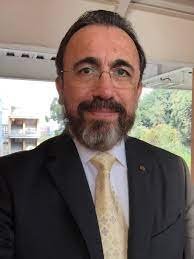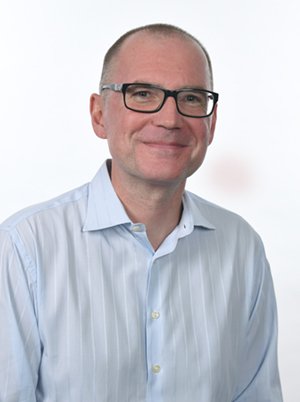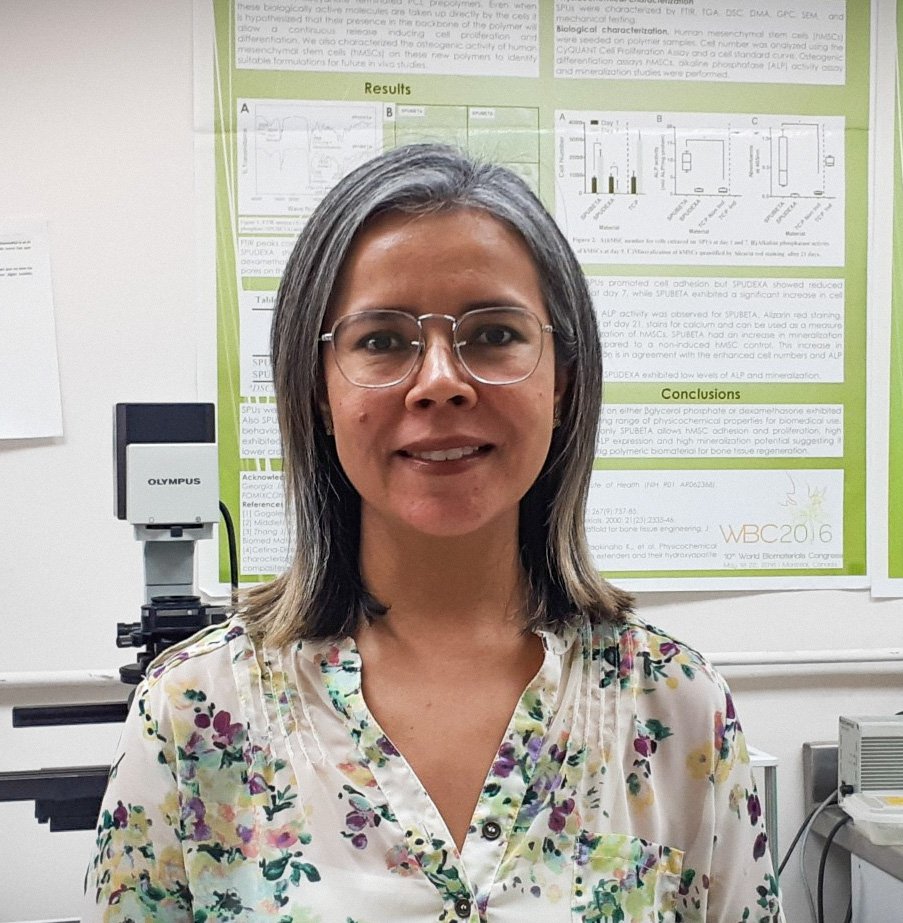
Arturo Rojo
Universidad Autónoma Metropolitana
Unidad Cuajimalpa
Details
Simulation of intramolecular recognition in drug design
Computational methodologies have proven to be a valuable tool in the proposal of precursor compounds to potential drugs. Most of these methodologies rely on the ligand-receptor interactions or more recently on the contact surface between two macromolecules. Artificial Intelligence and other algorithms have been used for ligand placement, to achieve ligand and receptor flexibility, and to evaluate contacts. Score functions have been proposed to comparatively evaluate compounds and their positions on the receptor to optimize binding. These scores model in different forms van der Waals, electrostatic, hydrogen bonds, and solvation in the binding process. Current methods, some of their successes and limitations, and some cases will be discussed.

David Reyes
Centro de Investigación en Matemáticas
PhD Research Professor at Centro de Investigación en Matemáticas (CIMAT)
Details
From Alzheimer's disease to the identification of new conformational populations of lipids: Understanding the nature of the ripple phase through molecular dynamics simulations and unsupervised machine
The naked mole rat (NMR) is characterized by its longevity and immunity to neurodegenerative diseases, including Alzheimer's disease (AD). Seeking to understand the protective mechanism of NMR, we studied models based on the lipid concentration of its neurons. We found that sphingolipids form nanodomains thanks to the interdigitation of their tails. To evaluate the generality of the phenomenon we studied the pure DPPC membrane. From the modification of a three-particle correlation function that combines radial and angular distances, and unsupervised Machine Learning techniques, four subpopulations were found in the phase of the wave (ripple phase, Pβ') of the membrane. The expected gel and fluid phase, together with their extended equivalents, that is, lipids whose two fatty acids are the most distant from each other. In the curvature of the membrane, we do not find many lipids in the fluid phase, but the flexible, ordered and extended lipids, which provide that freedom. The disordered

Enrique Hernandez Lemus
Instituto Nacional De Medicina Genómica
Statistical physicist, network scientist and genomicist studying collective phenomena in complex systems.
Details
The Breast Cancer Protein Co-Expression Landscape.
Proteins are among the most fundamental building blocks and molecular players behind the functions of cells and tissues. Their abundance and interaction patterns shape, to a large extent, what happens at the cellular and organ levels. This is also true regarding tumor tissues. In this work, we explored the patterns of abundance and co-occurrence of a large number of proteins in breast cancer cells and their healthy counterparts. This was accomplished by comprehensive analysis of open proteomic data via mutual information co-expression networks. We could observe that there are distinctive biological processes associated with communities of these networks and how some transcriptional co-expression phenomena are lost at the protein level. We discovered the main differences and tried to see whether those differences may be associated with relevant aspects of the biology of these tumors. Our final goal is to provide information to empower cancer clinicians and pharmacologists to develop bet

Ioan Andricioaei
University of California, Irvine
Details
Methods for Calculating Long-time Relaxation and Large-scale Dynamics of Biological Molecules.
I will present methods that allow for the enhanced calculation of long-time kinetics of complex classical systems based on the Wiener stochastic path integral formalism. Assigning weights to Langevin trajectories of artificially biased dynamics allows for the calculation of time correlation functions for the unbiased system of interest via re-weighting. In the context of fluctuation theorems, a similar strategy allows for the analytical derivation of new, exact formulas for the entropy-enthalpy components of the free energy directly from non-equilibrium dynamics.Secondly, I will present a methodology that uses molecular-dynamics derived parameters to scale up the dynamics of DNA molecules on the micrometer-microsecond scale via a Kirchhoff elasticity theory for elastic rods.Lastly -if time permits- a view of the dynamical arrest transitions in proteins will be discussed in the language of jamming theory, a view in which universality curves for protein folding, granular jamming,

Irlanda Lagarda Diaz
Universidad de Sonora
División de Ciencias Exactas y Naturales, Departamento de Física
Details
Legume Lectins from the Sonoran Desert and their Biomedical Potential
Lectins are proteins extensively distributed in nature that can recognize and bind simple or complex carbohydrates in a very specific manner. Since the cell surface is rich in glycoconjugates that vary according to the type and developmental stage of cells, lectins have been proposed as potential target molecules for developing practical applications in the field of health and pharmaceutical research. Particularly, legume lectins display interesting features and activities as antimicrobial, insecticidal, and antitumor agents. For instance, some lectins isolated from arid land legumes of the Sonoran Desert recognize glycans exclusively found in certain tumoral cells and exert an antiproliferative effect. Therefore, these lectins could be potential candidates for the development of biomedical tools for the detection and treatment of cancer.

Jaime Ruiz Garcia
Universidad Autónoma de San Luis Potosí
Laboratorio de Física Biológica
Details
Making friends to our old enemies: from viral self-assembly to vaccine development.
Viral particles can be as simple as an RNA or DNA molecule inside a spherical capsule, called a "capsid," usually made up of multiple copies of a single protein. The spherical shape is not the only shape of the capsid, there are viruses with capsids of different shapes, such as tubular or conical, and even more complex. Also, because viruses only "come to life" when they are inside their host cells, it is possible to extract them from their hosts and study them as physical objects that is, to carry out controlled experiments similar to those carried out, for example, with polymers or colloidal systems. In this talk, I will introduce some physical aspects of virus assembly and structure. Then I will present a brief history of antiviral vaccine development and what is the essential biophysical basis for antiviral vaccine development. In the third part of the talk, I will focus on the physical characteristics of COVID-19 and comment on some aspects of the antiviral vaccines against this v

Jose L. Medina Franco
UNAM (México)
Research group DIFACQUIM, Faculty of Pharmacy, National Autonomous University of Mexico (UNAM), Mexico
Details
Advancing epigenetic drug discovery with epi-informatics
A broad range of computational approaches collectively called “epi-informatics” are increasingly used to advance epigenetic drug and probe discovery. Herein, we discuss the recent advances in epi-informatics to chart the epigenetic relevant space and guide the development of targeted libraries.We also discuss the applications of computational approaches to guide the identification of small molecules active against one or more epigenetic targets. In particular, we will cover current trends of machine learning models generated based on sizeable public compound databases annotated with biological activity and implemented in a free webserver.As a case study, we will present the identification of potent and dual inhibitors of DNA and histone methyltransferases. In addition to showing low micromolar enzymatic inhibition, the small molecules are also active in various cell lines. The hit compounds were identified from synthetic screening libraries focused on epigenetic targets after an

José Antonio Velez Perez
UAM Azcapotzalco
Profesor Asociado División de Ciencias Básicas e Ingeniaría
Details
Physical features of the polymer translocation across a cylindrical channel.
I will present a theoretical approach to study the transport properties of a polymer crossing a cylindrical channel from a donor to an acceptor region. In this approach, the average free energy of the polymer is computed when the polymer fills, transits and leaves the channel. Results show that the transit of one polymer across the channel occurs against an M-type energy barrier originated by the loss and gain in conformational entropy as the polymer enters and leaves the channel. This energy barrier inversely grows with the channel radius and linearly decreases in the presence of a chemical potential promoting polymer insertion into the channel.
The time needed by the polymer to transit the channel is the average of the first passage time in a two-stages process. The transport time grows according to a power law with the polymer size, with the channel radius exponentially controlling the time scale at which translocation occurs. Interestingly, the translocation time grows super-exponentially with the length of the channel which exceeds the translocation time of biopolymers across biological channels.

Nina Pastor
Universidad Autónoma del Estado de Morelos
Details
Salt-induced conformational changes in hydrophobins, the raincoats of fungi
Hydrophobins are a protein family found only in fungi. They are secreted and help the hyphae to break the water-air interface so the fungus can grow; they also coat spores, making them water-repellent so they can travel faster and further. To do so, hydrophobins undergo a conformational change that exposes amyloid-forming regions, resulting in their polymerization on the cell surface. As monomers they are water soluble. We examine the structure and dynamics of a collection of monomeric hydrophobins from mesophilic and halophilic fungi, at different salt concentrations ranging from 0.05M to 5M NaCl, using all-atom molecular dynamics simulations. The analysis is centered on the exposure of amyloid-forming regions and on whether these regions are exposed more efficiently or not depending on the concentration of NaCl and the salt concentration at which the parent fungus expresses this protein.

Orlando Guzmán Lopez
UAM Iztapalapa
Profesor-Investigador at UAM-Iztapalapa
Details
A Kinetic Model For The High Selectivity Of Genomic Rna Packaging By Hiv-1 Gag Proteins
Orlando Guzman[1], Robijn Bruinsma[2], Ioulia Rouzina[3]
[1] Departamento de Física, Universidad Autónoma Metropolitana -Iztapalapa, Mexico.
[2] Department of Physics and Astronomy, University of California, Los Angeles, United States.
[3] Dept. of Chemistry and Biochemistry, The Ohio State University, , United States.
It is not known how HIV-1 retroviruses select their genomic RNA (gRNA) for virion packaging from great excess of cellular mRNA molecules in the cytoplasm of infected cells. Both in vitro and in vivo, there is no sufficient preference for Gag binding to its primary packaging signal, called Ψ RNA, that could account for over one-hundred-thousand-fold selectivity of gRNA packaging into virions. Here we propose a two-step mechanism of selective gRNA packaging by Gag.
• The first step includes preferential plasma membrane (PM) attachment of the small gRNA-bound Gag cluster over mRNA bound Gag cluster, that modestly enriches nucleation complexes with gRNA over m

Pavel Castro V
Universidad Autónoma de Chiapas
Profesor de la Facultad de Ciencias en Física y Matemáticas
Details
A conformational transition between ordered and disordered states for a semiflexible polymer is triggered by confinement.
Motivated by problems in biological physics such as the understanding of the packaging of the RNA or DNA genome in virus capsids or the winding problem of DNA around histone octamers, here we use a theoretical set-up to describe the conformational states of DNA or RNA, seen as semiflexible polymers, to elucidate their structure when they are enclosed in various types of spatial confinement. In particular, the conformational states of a semiflexible polymer are studied as stochastic realizations of trajectories defined by the Frenet equations under the assumption that the curvature is a random variable that satisfies a white noise fluctuation theorem, which is consistent with the Worm-Like Chain Model. This approach allows us to derive a Hermans-Ullman equation, where we exploit a multipole decomposition that allows us to show that the positional probability density function is described by a modified telegrapher's formula. This formalism is applied to different physical settings, from a polymer in a two- or three-dimensional open Euclidean space to a polymer enclosed in a compact domain emulating the viral capsid to a two-dimensional differential manifold mimicking the boundary of the histones octamers.

Tom Chou
UCLA Computational Medicine
Depts. of Computational Medicine and Mathematics
Details
A Stochastic Model for Transcription-Translation Coupling.
Under certain conditions, transcription and mRNA translation in certain prokaryotes appear to be coupled, whereby mRNA and protein are simultaneously produced at single transcript level. Transcription-translation coupling (TTC) is thought to possibly speed up the overall process, provide protection during the transcription, or regulate timing of transcript and protein formation.This coupling is typically measured by "time-of-flight" experiments that quantify the time delay between detection of a complete transcript and a complete protein. However, the simple population-averaged time delay cannot resolve molecular details of TTC. In this study formulate a continuous-time stochastic model that incorporates ribosome and RNAP elongation rates, initiation and termination rates, RNAP pausing, and direct ribosome and RNAP interactions (association and exclusion).Our model allows us to predict how distributions of delay times depend on these molecular features of translation andtrans
No Results














